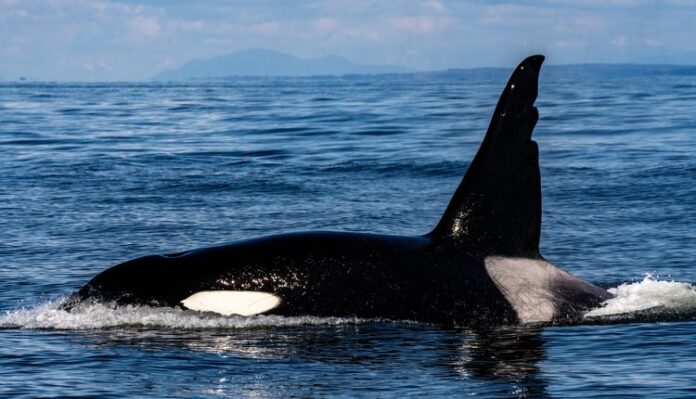A famous aquatic animal with a menacing name has returned to the Salish Sea, signalling the arrival of spring.
According to the Pacific Whale Watch Association, Bigg’s killer whale T063 also known as “Chainsaw,” has returned and his arrival means warmer days are on the horizon.
“A Chainsaw sighting is a tell-tale sign of spring,” said executive director Erin Gless. “He makes an appearance at the same time each year. He’s a local celebrity.”
Chainsaw is nicknamed for his distinctive jagged dorsal fin and was first spotted on Tuesday morning in Boundary Pass between the Canadian Gulf Islands and Washington’s San Juan Islands.
He was travelling with his presumed mother T065 “Whidbey” and another family led by T049 “Nan,” short for Nanaimo, according to whale researcher Mark Malleson.
Born in 1978, the association says Chainsaw is considered to be one of the oldest males in the Bigg’s population at the age of 45. They add while his visits to the area are predictable, they are usually brief and he is frequently documented in southeast Alaska where he is referred to as “Zorro.”
The number of Bigg’s killer whales that feed in the Salish Sea are increasing, according to the association. They say this is because instead of relying on salmon like southern resident killer whales, they rely on the increasing numbers of seals and sea lions in the area.
For marine naturalist at Juan Safaris Lauren Tschirhart, meeting the whale was a big moment and one she could share with others.
“I finally met the man, the myth, the legend,” said Tschirhart. “I’ve known about Chainsaw for years, but always missed out on seeing him. Today was my day. We made sure our guests understood how special this encounter was.”






